Economia emergentă a lemnului urban
De Megan Offner, New York Heartwoods

New York Heartwoods este o întreprindere socială deținută de femei din Warwick, New York. Întreprinderea a fost înființată în 2010 cu misiunea de a regenera vitalitatea pădurilor și de a maximiza valoarea deșeurilor de copaci. Una dintre co-fondatoarele întreprinderii, Megan Offner, ne împărtășește viziunea asupra noilor nișe de piață create de economia emergentă a lemnului urban.
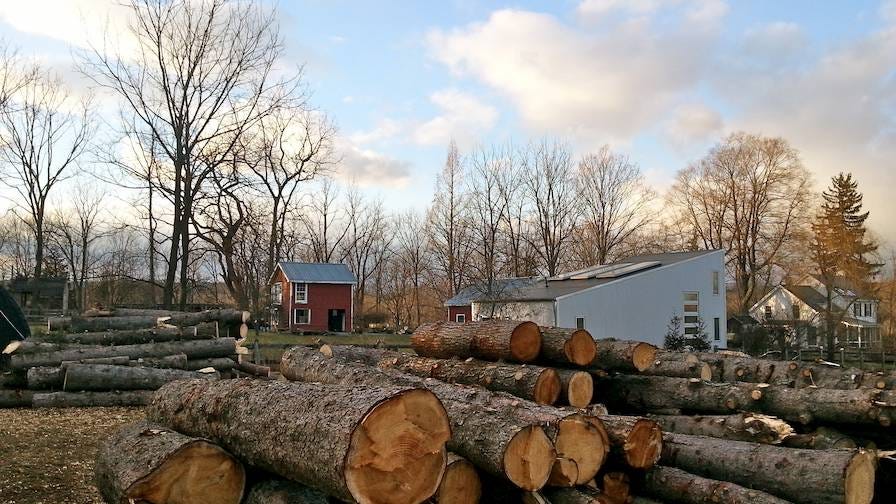

New York Heartwoods (NYH) și-a început activitatea în 2010, cu ajutorul unui fierăstrău portabil Wood-Mizer LT40 Hidraulic. Ne-am dezvoltat planul de a gestiona și recolta copaci când am realizat câți copaci cădeau, se uscau și erau îndepărtați de specialiștii în peisagistică urbană.
Numeroasele uragane și epidemii de insecte invazive au dus la provocări fără precedent pentru pădurile și comunitățile noastre, în timp ce bugetele municipalităților și proprietarilor de terenuri se reduceau odată cu dispariția rapidă a copacilor doborâți sau pe cale de a se usca. Gropile de gunoi din toată țara se luptă să țină pasul cu cantitatea de deșeuri de lemn care este generată și, în același timp, oamenii au nevoie de locuri de muncă, iar comunitățile trebuie să evolueze și să devină mai puternice. Prin prelucrarea lemnului urban, participăm la crearea de soluții pentru:
- reducerea cheltuielilor de eliminare a lemnului,
- redirecționarea unui material valoros din fluxul nostru de deșeuri,
- scăderea emisiilor de gaze cu efect de seră,
- satisfacerea cererii de produse locale din lemn,
- și dezvoltarea unei noi economii provocatoare.
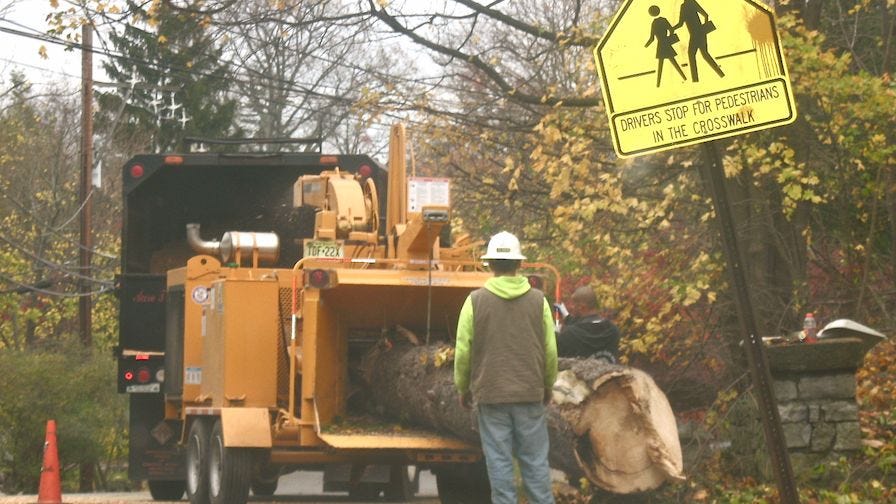

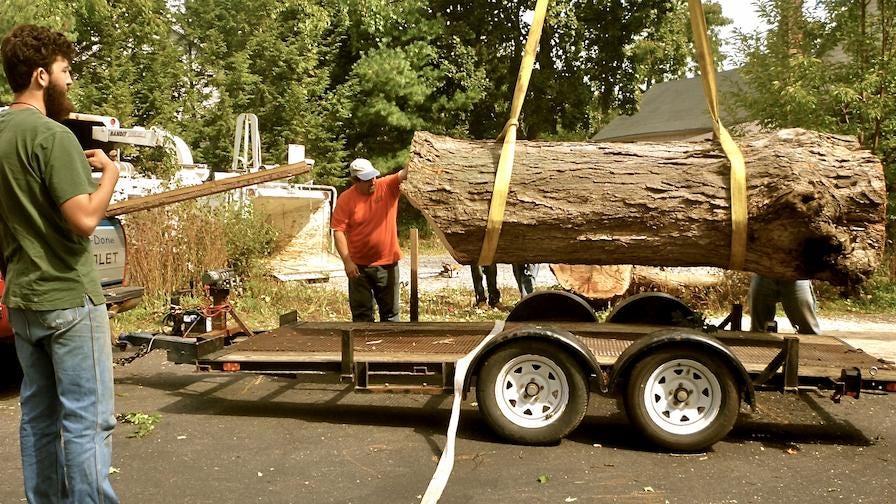

Relațiile cu comunitatea reprezintă cheia atât pentru cerere, cât și pentru ofertă. Pe fondul intemperiilor meteorologice anuale, cum ar fi uraganele și taifunurile, împreună cu apariția dăunătorilor, avem acces la mai mulți bușteni decât suntem echipați să procesăm. Recoltarea buștenilor în sine necesită forță de muncă și, prin urmare, în cele mai multe cazuri, costuri prohibitive pentru comunitatea noastră. Lucrând cu operatori de fierăstraie pe bază de contract, putem primi deșeurile de bușteni gratuit sau, cel mult, contra costului benzinei și al timpului șoferului camionului.
Dincolo de serviciile de debitare pe bază de contract care furnizează atât bușteni, cât și servicii pentru clienții dornici de achiziția lemnului, există proprietari de terenuri, instituții, trusturi funciare, Departamentul Transporturilor, companii de utilități, administratorii municipali de terenuri și oficiali locali interesați. Am descoperit că aceștia din urmă realizează o legătură deosebit de fructuoasă, deoarece controlează ceea ce face firma de peisagistică urbană contractată cu copacii orașului. Deoarece majoritatea orașelor sunt împovărate cu creșterea costurilor pentru serviciile urbanistice, scăderea veniturilor, creșterea costurilor la depozitele de deșeuri și scăderea spațiului de depozitare, redirecționarea buștenilor oferă șansa de soluții de gestionare a deșeurilor și de reducere a cheltuielilor de curățare în urma furtunilor, ceea ce poate genera lemn pentru bănci de parc, mese de picnic, garduri, podele și dulapuri pentru clădirile locale. Capacitatea de a ameliora problemele locale în timp ce se creează cheresteaua valoroasă poate duce la contracte și resurse municipale care vor sprijini atât oferta de bușteni, cât și cererea de produse.
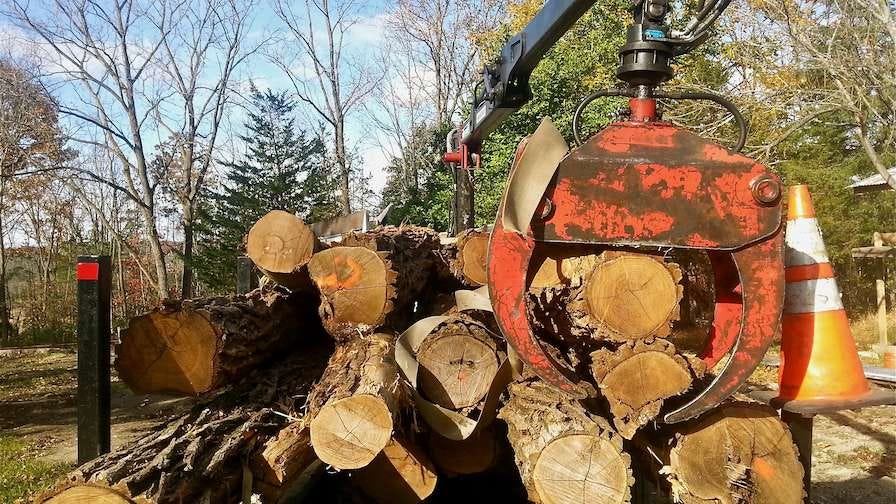

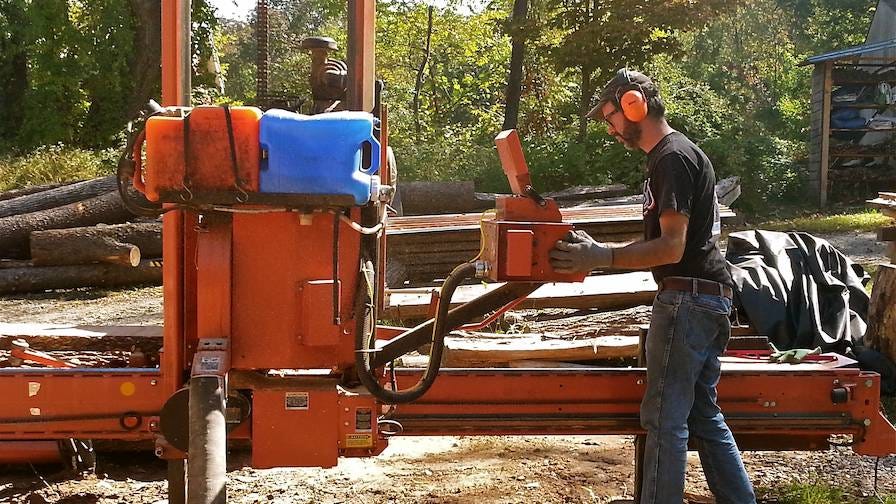

Fierăstraiele portabile cu pânză panglică au un mare avantaj față de gaterele circulare mari atunci când lucrează cu copacii urbani. Capacitatea lor de a fi transportate la fața locului poate elimina provocările logistice și cheltuielile legate de transportul sau eliminarea buștenilor.
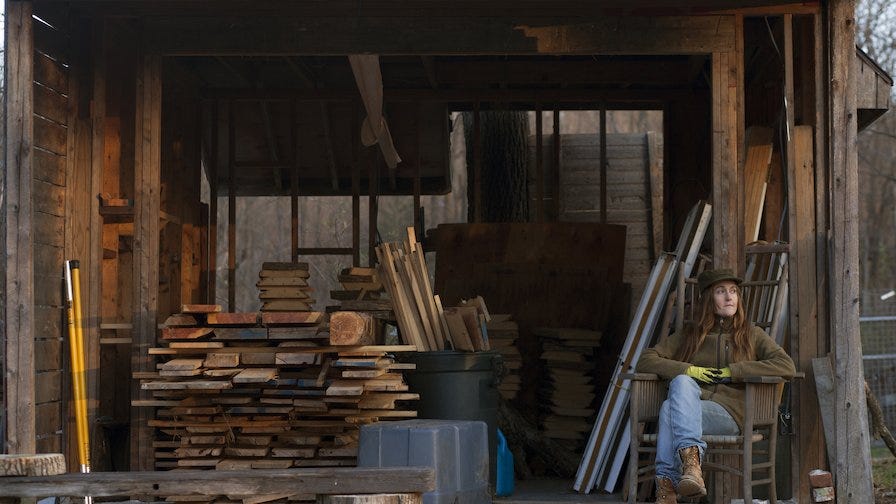

De exemplu, după uraganul Sandy, gropile de gunoi au fost solicitate la capacitate maximă, astfel că a fost necesară utilizarea parcărilor din multe localități din statul New York pentru depozitarea buștenilor căzuți. Operatorii locali de fierăstraie au fost invitați să vină să debiteze ceea ce își doreau gratuit și, chiar și atunci, a fost nevoie de luni pentru ca multe dintre grămezile de bușteni depozitați să se reducă. Probabilitatea de a lovi bucăți de metal, comună în cazul copacilor urbani, este prea scump și, prin urmare, acesta este un risc evitat de operatorii de gatere circulare comerciale. Metalul poate toci sau chiar rupe pânza, dar din moment ce pânzele cu bandă îngustă sunt în schimb ieftine și ușor de ascuțit, această valoare poate fi recuperată printr-o comercializare adecvată a poveștii copacului și caracterului lemnului.
Copacii urbani au, în general, ramuri inferioare și conțin metal sau alte obiecte străine, creând noduri, culori și granulații pronunțate. Aceste caracteristici unice, împreună cu istoria copacului, sunt dorite de artizani, producători, designeri de interioare și arhitecți pentru crearea de mobilier, podele și alte produse personalizate. Documentarea poveștii copacului respectiv și furnizarea de imagini ale transformării acestuia în produse finite adaugă valoare, făcându-l mai semnificativ pentru cumpărător. Fiecare industrie folosește lemn într-o anumită capacitate, ceea ce duce la o multitudine de posibilități de piață de nișă.
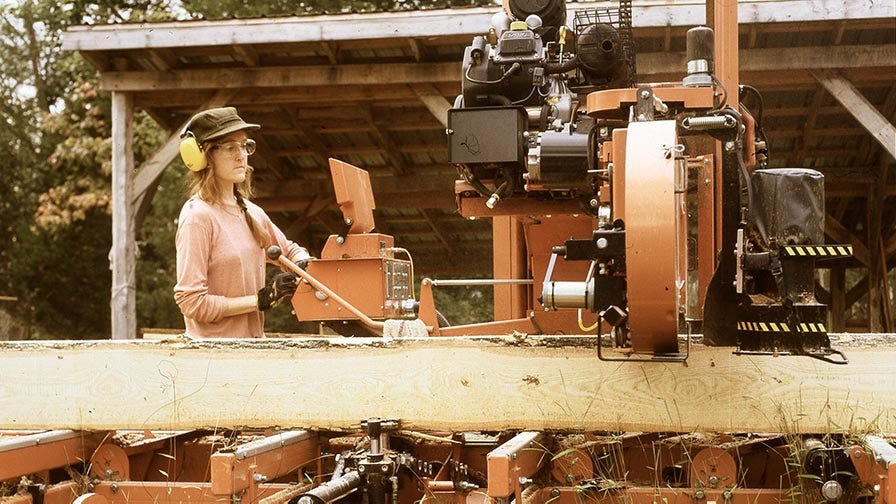

Pe măsură ce populația crește, crește și cantitatea de teren urban. Potrivit Journal of Forestry, până în anul 2050, cantitatea de zone urbanizate din Statele Unite este preconizată să crească de la 3,1% în 2000 la 8,1%, un total de 392.400 km2, ceea ce este mai mare decât statul Montana. Cu aceasta, va crește și producția și vânzarea de lemn urban și va exista o mai mare integrare în sistemele de management municipal.
Pentru mai multe informații, vizitați www.newyorkheartwoods.com.

